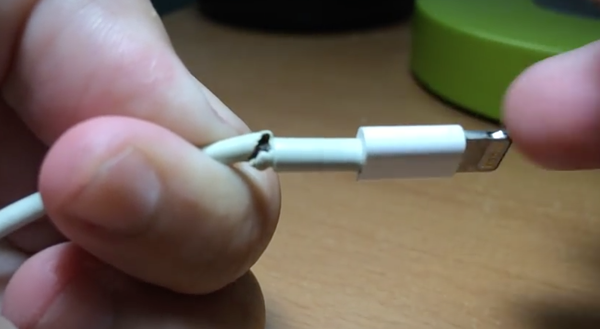One thing that generally sets Apple apart from its competition is the company’s dedication to produce innovative products that are crafted from the absolute best materials using the latest engineering techniques. And in some cases, even inventing new materials or engineering methods to take things to a different level. Unfortunately, even with the best will in the world, sometimes lapses in quality do make themselves known, which certainly seems to apply to Apple’s Lightning cables. Thankfully, there may be a solution, albeit a little cumbersome.
Apple’s introduction of the Lightning cable, as a direct replacement for the 30-pin solution that shipped with devices like the iPhone 4s, promised to bring with it an improvement in durability. Anyone who regularly uses a Lightning cable for charging or synchronization will know that this just isn’t the case. Some cables will suffer damage quicker than others, but a lot of users are complaining that simply manipulating the cable to fit into sockets or just generally using it causes the ends to fray in record time.

The majority of the damage caused to the Lightning cable comes from twisting and manipulating it in a way that was not intended, which of course makes sense. Individuals are probably also guilty of yanking the cable out of the socket or the attached computer by actually grabbing the sheath of the cable rather than using the hard plastic connection. A relatively simple solution to the problem, albeit not exactly ideal, is to embark on a simple “life hack” by putting springs at both ends to ensure that the cable itself isn’t bent or manipulated in a permanent way that would cause harm to the surrounding sheath.
Check out the accompanying video for a short guide on how this can be achieved.
But what about if you already have a damaged cable? Should you wrap a spring around it to improve things? Rather than parting with cash or attempting some additional life hacks, it’s been reported that Apple will apparently offer a no hassle replacement within retail stores when presented with an accompanying iPhone or iPad. Of course, the cable is something that’s likely used every day, so parting with approximately $19 for a replacement wouldn’t hurt either.
You may also like to check out:
You can follow us on Twitter, add us to your circle on Google+ or like our Facebook page to keep yourself updated on all the latest from Microsoft, Google, Apple and the web.

